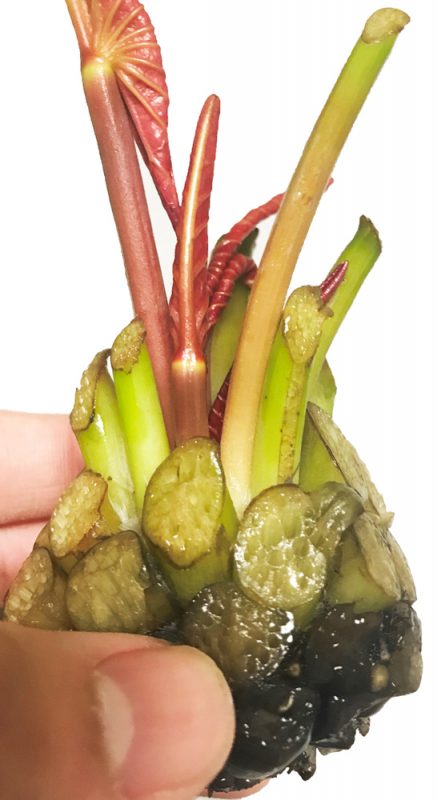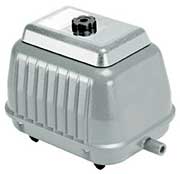14. Caring for Tropical Lilies
Dormancy in hardy plants native to colder climates is triggered by shorter days beginning in the fall. Tropical plants, however, are native to regions with relatively constant day length and rarely enter a dormant period. Tropical lilies grown above Zones 9 and 10 require winter care. Growers with greenhouses or indoor aquariums can simply move their tropicals inside. Once inside, the aim is caring for tropical lilies to keep them viable, not actively growing. They should not be fertilized when temperatures should be 70-75°F and should not be fertilized during this time. Once spring arrives and the water temperature of the pond has reached 70°F, tropicals can be returned to the pond and fertilized regularly.

Growers without greenhouses or indoor aquariums can also prepare their tropical lilies for winter dormancy. The technique takes advantage of a stress response triggered by drought periods which tropical plants normally experience in their native regions.
Tropical lily tubers have successfully adapted to these drought periods and are protected until the rainy periods return and the plants can flourish. Caring for tropical lilies for winter is outlined below:

• Near the end of the growing season, withhold fertilizer during the last month. In response to decreased nutrition, the plant produces small tubers.
• Leave the tropical lily in the pond until the leaves have died which may require more than one frost. At the point from which the leaves emerge, feel for a hard tuber, usually round or egg-shaped. There may be a single tuber or a large tuber and several smaller ones. Smaller tubers are more likely to produce vigorous growth in the spring. Observe carefully as you remove the tuber from the soil to determine which end gives rise to leave and which gives rise to roots which will be important when the tuber is replanted in the spring.
• Rinse all the tubers. If roots are still attached, allow the tubers to air dry for a few days during which a callus will form at the root base to protect the tuber from drought. Snip the dried roots off near the tuber. Remember, the tuber must be hard for good winter storage.
• Store the tubers in a plastic bag or glass jar filled with distilled water. Distilled water discourages growth of harmful bacteria and fungi that can rot the tuber. Store the container in a cool, dark place at temperatures between 50 and 65° F. Check the container monthly. If the water is cloudy or foul, replace it with fresh distilled water. With clean water, low temperatures, and dark storage, the tubers should survive the winter.
The following spring:
• Place the container in a lighted, warm place. Sprouts and rootlets will begin to form.
• Pot the tubers in small pots and place these pots inside a large container filled with enough water so that emerging leaves can float. Keep water temperatures between 70 and 75° F.
• When leaves reach the surface of the water in the container and white feeder roots appear, break the young plantlet off the tuber and plant it in a standard lily container.
• When pond water temperature has reached a constant 70° F, the new lilies can be moved outside. Fertilize monthly during the growing season.




